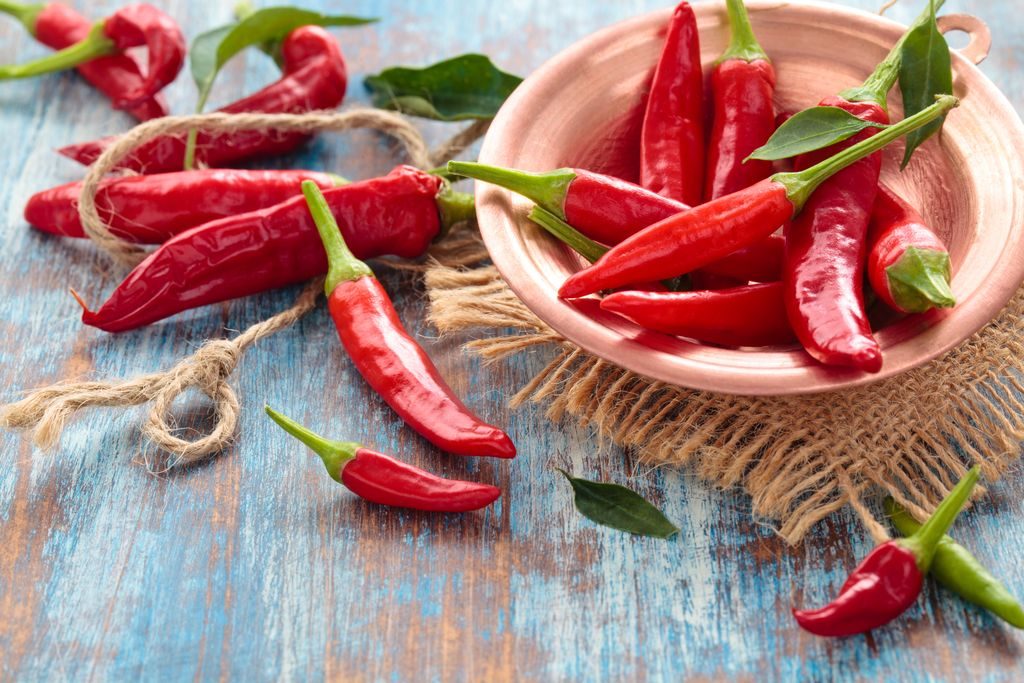Chilli pepper
Chilli peppers add heat and spice to food, there are many different varieties that vary in size, shape, colour and heat.

Chilli peppers are widely used in many cuisines around the world but are thought to have originated in Mexico. They are used to add spice and heat to many different kinds of dishes.
There are about 2000 known varieties of chilli peppers in the world. They can vary vastly in size, shape, colour and heat. Some of the most popular varieties include Jalapenos, Thai Bird’s Eye peppers, Cayenne peppers and Habanero. Chilli peppers are available fresh, dried (whole or in flakes) and powdered.
When you think of chilli peppers you normally think of green and red but they can also be yellow, orange or even black!
They can be eaten raw in recipes like salsa, jalapenos are a common addition to Nachos and other Mexican dishes. They are also the main ingredient in Harissa, a Tunisian chilli paste used both as a condiment and as a flavouring for meats and vegetables.
In cooking chilis can be used in stir-fries, hot sauces, chilli con carne, pasta sauces or even to flavour chocolate! Chilli jam is simply delicious, it’s great on cheese and crackers, or as a condiment for burgers.
Another great use for chilli peppers is to spice oil, you can add whole or chilli flakes to the oil of your choice. The result is a wonderful spicy oil you can use in cooking or drizzle over food for an extra kick!
The Scoville scale
 The official scale that measures the level of spice is called the Scoville scale. This scale measures the level of capsaicin in food.
The official scale that measures the level of spice is called the Scoville scale. This scale measures the level of capsaicin in food.
Capsaicin is a chemical present in chilli peppers that activates certain neurons in your body. These neurons are the same receptors that are activated by extreme heat so essentially capsaicin tricks your brain into believing that your mouth is on fire – that’s why you feel a burning sensation.
The Scoville scare measures the amount of water is needed for the capsaicin content to be diluted before it is no longer detectable to humans:
- Pepper X, Carolina Reaper, Dragon’s Breath: 800,000 to 3,200,000
- Red Savina, Chocolate Habanero: 350,000 to 800,000
- Habanero, Scotch Bonnet: 100,000 to 350,000
- Malagueta pepper, Cayenne pepper: 10,000 to 100,000
- Guajillo pepper, Jalapeño: 1,000 to 10,000
- Banana pepper, Cubanelle: 100 to 1,000
- Bell peppers, Pimento: 0 to 100
Nutritional informations
The spice level of chillies depend on their Caspian level, the more Caspian the hotter it will be. Caspian has pain-relieving qualities and is an ingredient in many over-the-counter pain relief creams.
There are about 40 calories per 100g of chilli peppers.
They contain good amounts of Copper and Iron which are helps your body form new blood cells! Chilli peppers also contain good levels of Vitamin A and Vitamin C.




